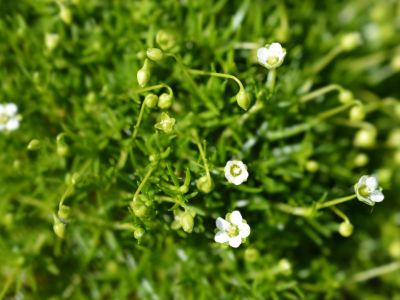Irish Moss Growing Zones and Info
A member of the Caryophyllaceae family, Irish moss (Sagina subulata), which is not a moss at all, is also called Corsican pearlwort or Scot’s moss. Irish moss plants perform in a manner similar to moss, however. They do need some light to maintain the most amazing of emerald green colors found in its foliage. This herbaceous perennial (evergreen in warmer zones) turns green as temperatures warm. Charming little white blooms appear sporadically throughout the growing season. For a similar plant with a more yellow tint, try Scotch moss, Sagina subulata Aurea. Irish moss growing zones include USDA plant hardiness zones 4 through 10, depending on the variety you choose. Most areas of the United States can use Irish moss plants in some manner. Not a heat loving specimen, use Irish moss plants in a sunny to partially shaded area. In warmer Irish moss growing zones, plant where it is protected from the scorching sun. Irish moss may turn brown during summer’s hottest days, but greens up again as temperatures fall in autumn.
How to Grow Irish Moss
Plant Irish moss in spring, when danger of frost is passed. Space plants 12 inches (31 cm.) apart when first planting. Soil should be fertile and have good drainage. Irish moss plants need regular watering, but should not have soggy roots. Care for Irish moss is simple and includes cutting out browning patches in older mats. Growing Irish moss reaches only 1 to 2 inches (2.5-5 cm.) in height and when used as a lawn replacement, does not need mowing. If you don’t wish for such a drastic makeover, consider the possibilities of growing Irish moss as a ground cover. Use the grass-like mats to spread around pavers or to edge a rock garden. Growing Irish moss is also attractive in containers. Uses of Irish moss are limited only by your imagination.
